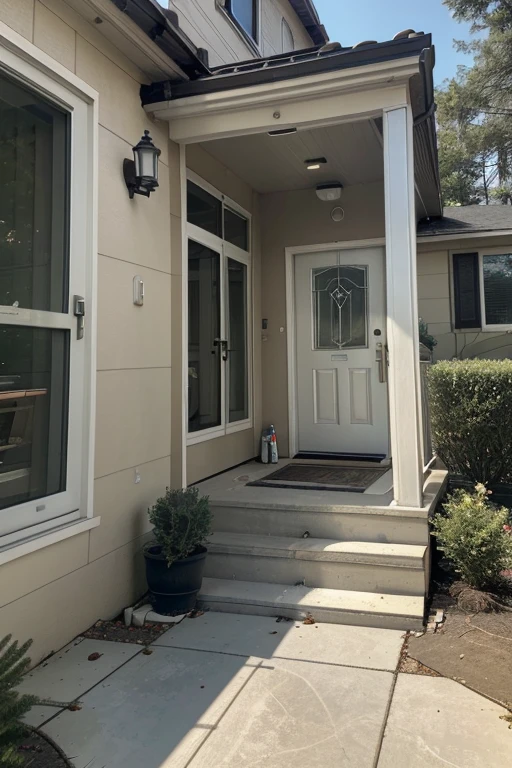Are You Sure Your Home is Safe from All Kinds of Danger? A Comprehensive Guide to Home Safety

Our home is often perceived as a sanctuary, a place of comfort and security. However, the reality is that various dangers, both internal and external, can lurk within our own walls. While complete elimination of risk is impossible, proactive measures significantly enhance home safety and create a more secure environment for ourselves and our loved ones.
This comprehensive guide delves into the potential dangers lurking in your home and provides actionable steps to mitigate them, ensuring a safer and more secure living space.
Identifying Potential Threats: From Everyday Hazards to Natural Disasters
While we may not always consider them, our homes harbor a variety of potential dangers:
- Fire Hazards: Electrical malfunctions, unattended candles, and flammable materials pose significant fire risks.
- Carbon Monoxide Poisoning: Leaky gas appliances and malfunctioning heating systems can release deadly carbon monoxide gas.
- Slip and Fall Accidents: Wet floors, loose rugs, and uneven surfaces can lead to falls and injuries.
- Intrusions: Unlocked doors and windows, inadequate security systems, and poor outdoor lighting increase the risk of break-ins.
- Natural Disasters: Depending on your location, your home may be susceptible to natural disasters like earthquakes, floods, or extreme weather events.
Building a Safer Home: Proactive Measures for Enhanced Security
By implementing proactive measures, we can significantly improve our home’s safety:
- Fire Prevention: Regularly inspect electrical wiring, install smoke detectors and carbon monoxide detectors, and have a fire extinguisher readily available.
- Carbon Monoxide Safety: Ensure proper ventilation for gas appliances, service heating systems regularly, and invest in carbon monoxide detectors.
- Fall Prevention: Secure loose rugs, install grab bars in bathrooms, and ensure adequate lighting throughout the house.
- Security Measures: Install sturdy locks on doors and windows, consider a security system, and maintain good outdoor lighting.
- Natural Disaster Preparedness: Develop an emergency plan, assemble a disaster preparedness kit, and stay informed about potential risks in your area.
Beyond the Basics: Addressing Specific Concerns
While the above measures provide a strong foundation, additional considerations are crucial for specific situations:
- Child Safety: Install child safety gates at stairs, secure cabinets containing dangerous chemicals, and keep sharp objects out of reach.
- Pet Safety: Ensure your pets have access to safe spaces, avoid leaving toxic substances within reach, and address potential electrical hazards.
- Mold and Air Quality: Regularly inspect for signs of moisture and mold growth, ensure proper ventilation, and consider air purifiers for improved indoor air quality.
Creating a Culture of Safety: Habits and Awareness
Beyond physical measures, cultivating a culture of safety is paramount:
- Regular Maintenance: Regularly inspect appliances, plumbing, and electrical systems for potential hazards.
- Safe Storage: Store flammable materials securely, dispose of hazardous waste properly, and keep medications out of reach of children and pets.
- Emergency Preparedness: Conduct fire drills with your family, have an emergency escape plan, and know basic first-aid procedures.
- Open Communication: Discuss safety concerns with your family, establish clear rules, and encourage open communication about potential hazards.
Remember: Safety is an ongoing process, not a one-time achievement. By proactively addressing potential dangers, implementing preventive measures, and cultivating a safety-conscious mindset, we can create a more secure and comfortable environment for ourselves and our loved ones.
Conclusion: Building a Safe Haven for Peace of Mind
Taking proactive steps towards home safety is an investment in peace of mind and well-being. By identifying potential threats, implementing preventive measures, and fostering a culture of safety, we can transform our homes into havens of security and comfort, ensuring a safer and more enjoyable living experience for all.
Port 443: Your Guardian Angel of Secure Browsing
Imagine the internet as a giant apartment building. Every resident (website) has a unique address, but they also need a specific doorway (port) to receive visitors (data). Port 443 acts as the secure entrance for most websites you visit.
Regular websites use port 80 for communication. This is fine for browsing public information, but for sensitive activities like online banking or shopping, security is crucial. That’s where port 443 comes in.
Websites using port 443 leverage a protocol called HTTPS, which scrambles the data flowing between your device and the website. It’s like whispering a secret message that only the intended recipient can understand. This encryption protects your personal information, like credit card details or login credentials, from prying eyes.
So, how do you know if you’re browsing securely? Look for the padlock symbol in your browser’s address bar next to the website URL. If it’s there, and the address starts with “HTTPS,” you’re using the secure port 443!